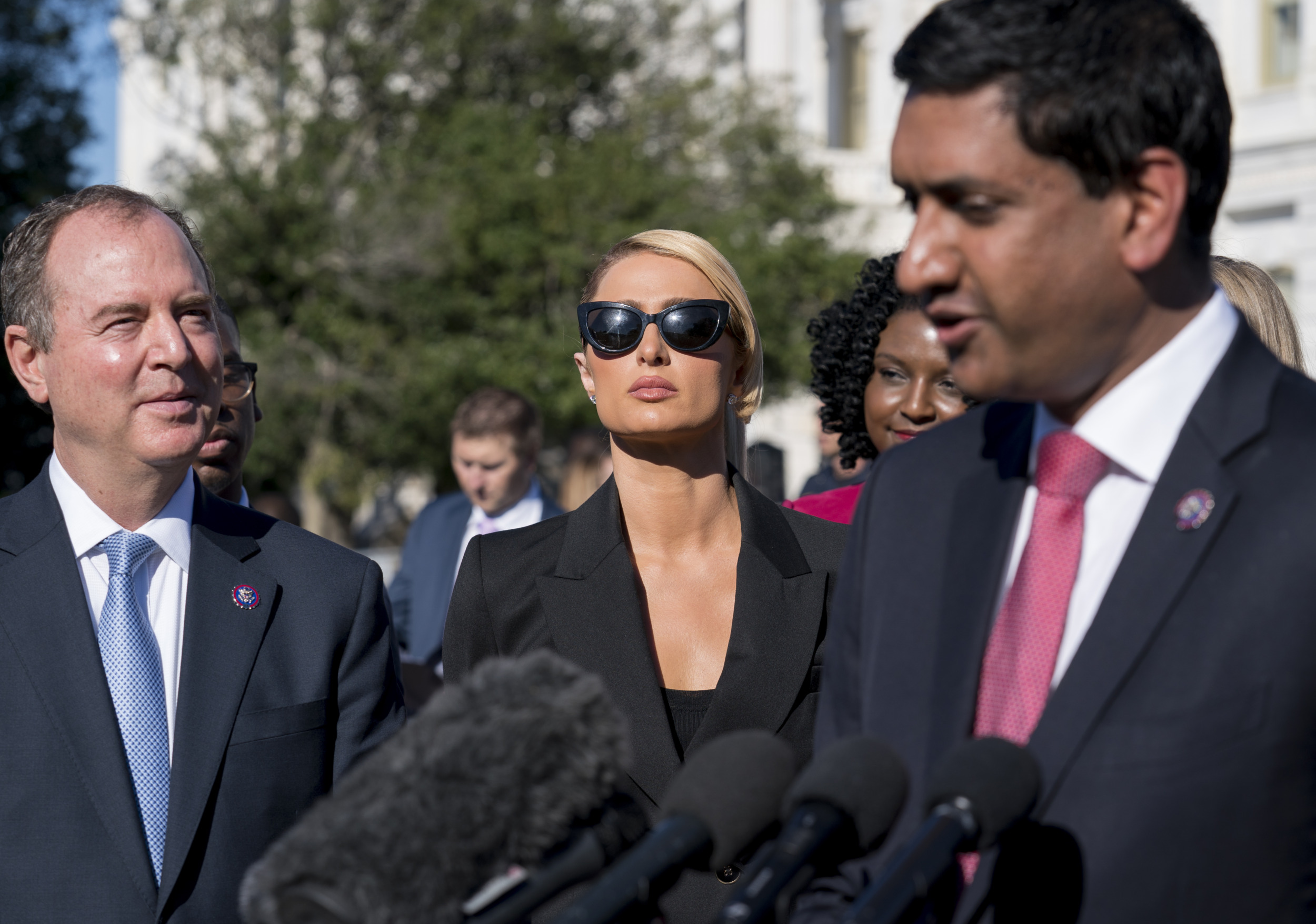In the wake of excoriating reports of alleged medical neglect and abuse at residential treatment centers that house hundreds of children who parents and state agencies say they can’t handle at home, a group of bipartisan lawmakers introduced legislation this spring that would increase federal oversight of an industry that’s gone largely unregulated for years. If passed, the bill would enhance national data collection and reporting, but it’s a far cry from what legislators promised just two years ago, when Democratic lawmakers held a Capitol Hill press conference with celebrity heiress Paris Hilton and called for the creation of a youth bill of rights.
“We need to pass legislation to establish a youth bill of rights that ensures the right to privacy, religion, medical care, education, and to all basic freedoms that children should have,” Rep. Ro Khanna (D-Calif.) said at the time.
That bill of rights is absent from the the Stop Institutional Child Abuse Act sponsored by Khanna and Rep. Buddy Carter (R-Ga.), Sen. Jeff Merkley (D-Ore.), Sen. Tommy Tuberville (R-Ala.) and Sen. John Cornyn (R-Texas). Khanna did not respond to calls or emails seeking comment.
The bill of rights was scrapped to gain bipartisan support, said Megan Stokes, executive director of the National Association of Therapeutic Schools and Programs, a membership association dedicated to residential treatment centers.
“For some people, they’re going to look at a youth bill of rights as taking away from parental rights,” she said. “It is a very partisan time, and it’s one where the end result is focusing on the kids and their needs and making sure that they’re okay. And I think everyone can agree with the end result, but people have different ideas of what that would look like. And that’s tough to reconcile across party lines right now.”
What the Stop Institutional Child Abuse Act would and would not do
If passed, the Stop Institutional Child Abuse Act would order the National Academies of Sciences, Engineering, and Medicine to produce a study on the state of youth in residential programs and to create a multi-agency work group tasked with developing recommendations to both minimize the use of residential care and improve the treatment of institutionalized youth.
The work group would publish a report every two years with policy recommendations and strategies to prevent residential placements by increasing access to community-based alternatives. It would also create a national residential care database — something that advocates say is long overdue.
“We need a better understanding of the funding these facilities receive and if the desired outcomes are actually being produced, which is why we’re asking for continued support from Congress in the form of research, data collections and making that data accessible to the public,” said Caroline Cole, a policy advocate who worked alongside Hilton to champion the bill. “We can’t take action against those facilities until we know what’s happening inside of them.”
Hilton, who spent nearly two years at two treatment centers and one wilderness program as a teen, has become a prominent advocate for reform of what reform advocates call the “troubled teen industry.” She supports the proposed legislation.
“I am pursuing state policy reform in all 50 states and will see the Stop Institutional Child Abuse Act through until it passes and is implemented correctly,” Hilton wrote in an email to Youth Today. “This issue requires sustained action and attention and I have no plans to stop shining a spotlight on the abusive Troubled Teen Industry until abuse is eradicated and children in America receive safe and accessible community-based treatment.”
Previous attempts to regulate the ‘troubled teen industry’
Lawmakers have tried to increase oversight in the past, but previous attempts to regulate this industry have been unsuccessful, even though an estimated $23 billion in industry funding comes from public coffers.
“While advocates, journalists and those with lived experience have been sounding the alarm on this issue for decades, the government has not properly tracked the funds utilized to place youth in these settings,” said Rebecca Mollinger, head of impact at 11:11 Media, Hilton’s global media company and platform. “The Stop Institutional Child Abuse Act will give the government a full picture view of the issue so we can finally begin to analyze our country’s overuse of institutional settings for youth and create better community-based alternatives.”
In 2008, the U.S. Government Accountability Office released a report that found “thousands of allegations of abuse, some of which involved death” at residential treatment centers throughout the country. In response to the findings, Rep. Adam Schiff, D-Calif., introduced a bill that would require the tracking of abuse allegations lodged against such programs.
But the bill never passed, and 14 years later, the office released a subsequent report finding the facilities were still failing to prevent instances of abuse and neglect, and called on the Department of Health and Human Services to facilitate information sharing among states on best practices for preventing and addressing maltreatment in residential facilities.
Stokes, who said that NATSAP, the industry group, supports the fast passage of SICAA without amendment, is confident that the bill will be enacted this time around, thanks to both its bipartisan support and status as a study bill.
“There’s no mandate that goes into effect right away,” Stokes said. “That makes it a lot easier for people to want to say, ‘yeah, I can sign on to this.’”
While it may seem like a step backward from the bill of rights that previous iterations called for, Mollinger said that this bill is the most informed strategic approach as a first step to address the industry.
“It is not a step back,” she said. “It is a way forward where the other iterations would have failed.”
***
Ellen Ranta Olson is a Utah-based journalist.




























